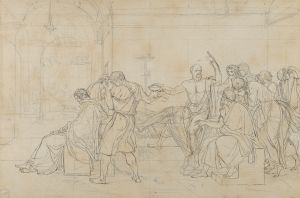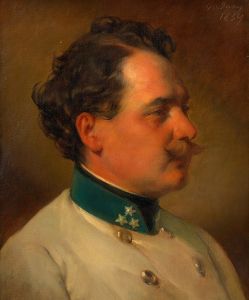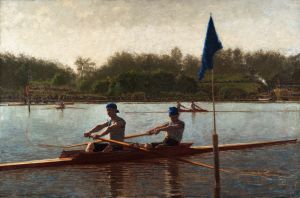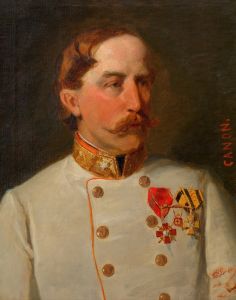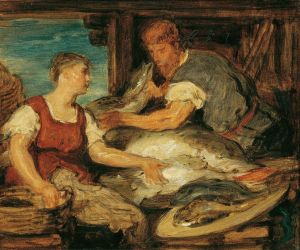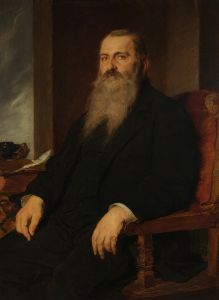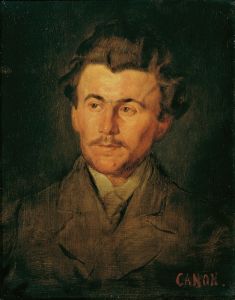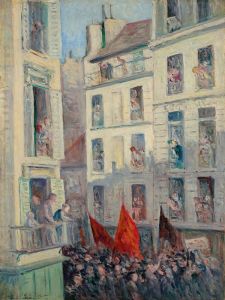
Die Loge Johannis
A hand-painted replica of Hans Canon’s masterpiece Die Loge Johannis, meticulously crafted by professional artists to capture the true essence of the original. Each piece is created with museum-quality canvas and rare mineral pigments, carefully painted by experienced artists with delicate brushstrokes and rich, layered colors to perfectly recreate the texture of the original artwork. Unlike machine-printed reproductions, this hand-painted version brings the painting to life, infused with the artist’s emotions and skill in every stroke. Whether for personal collection or home decoration, it instantly elevates the artistic atmosphere of any space.
Hans Canon, born Johann Baptist Strašiřipka, was an Austrian painter known for his historical and genre scenes, as well as portraits. One of his notable works is "Die Loge Johannis," which reflects his adept skill in capturing the essence of his subjects and the atmosphere of the scene.
"Die Loge Johannis" is a painting that showcases Canon's ability to blend realism with a touch of romanticism, a style that was prevalent in the late 19th century. The painting is known for its detailed depiction of a Masonic lodge meeting, a subject that was both intriguing and somewhat controversial during the time it was created. Freemasonry, with its secretive rituals and influential members, was a topic of fascination and speculation in 19th-century Europe, and Canon's work offers a glimpse into this world.
The painting is characterized by its meticulous attention to detail, from the expressions and postures of the figures to the intricate design of the lodge's interior. Canon's use of light and shadow adds depth and drama to the scene, highlighting the solemnity and mystery associated with Masonic gatherings. The composition is carefully arranged to draw the viewer's eye to the central figures, who are engaged in a ritual or discussion, emphasizing the hierarchical and structured nature of the organization.
Hans Canon's work often reflected the cultural and social dynamics of his time, and "Die Loge Johannis" is no exception. It captures the intersection of art, society, and the esoteric traditions of Freemasonry, making it a valuable piece for understanding the historical context of the period. Canon's ability to convey the nuances of human interaction and the subtleties of social settings is evident in this painting, as he presents a scene that is both intimate and grand.
The painting also serves as a testament to Canon's technical prowess. His use of color and texture brings the scene to life, creating a vivid and immersive experience for the viewer. The rich tones and careful brushwork demonstrate his mastery of the medium and his commitment to realism, while still allowing for an element of artistic interpretation.
"Die Loge Johannis" is a significant work within Hans Canon's oeuvre, reflecting both his artistic skill and his engagement with contemporary themes. It stands as an example of how art can provide insight into the cultural and social issues of its time, offering a window into the world of 19th-century Freemasonry and the broader societal currents that influenced it.
Overall, Hans Canon's "Die Loge Johannis" is a painting that captures the intrigue and complexity of its subject matter, showcasing the artist's ability to blend realism with narrative depth. It remains an important work for those interested in the intersection of art, history, and society, providing a rich and detailed portrayal of a unique aspect of 19th-century life.





